1. Tonopah, Nevada
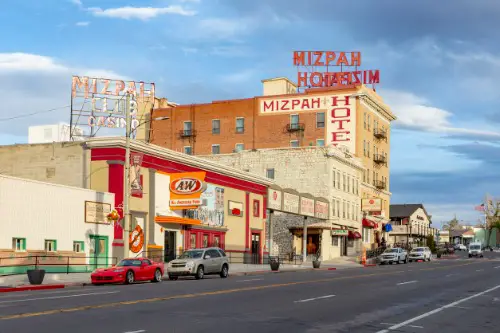
Tonopah, Nevada, was born out of the silver rush of the early 20th century, and it briefly experienced a burst of prosperity that made it a bustling town. Discovered in 1900, the silver mines around Tonopah quickly attracted miners and settlers from all over. At its peak, the town boasted a population of over 5,000, and it was home to hotels, stores, a post office, and even a hospital. It was also known for its thriving nightlife, with plenty of saloons and gambling establishments for miners to blow off steam after a long day in the mines.
However, just as quickly as it boomed, Tonopah began to fade. By the 1920s, the silver mines started to run dry, and the Great Depression made matters even worse. As the silver market collapsed, residents started to move elsewhere, and by the 1940s, Tonopah was essentially abandoned. Despite its decline, Tonopah remains a popular stop for travelers exploring Nevada’s mining history. The Tonopah Historic Mining Park offers a fascinating look at the old mining operations, and the Tonopah Historic District is listed on the National Register of Historic Places. Visitors can still see the remains of the old mines, some of the original buildings, and even the infamous Mizpah Hotel, where paranormal activity is reported by ghost hunters.
2. Leadville, Colorado
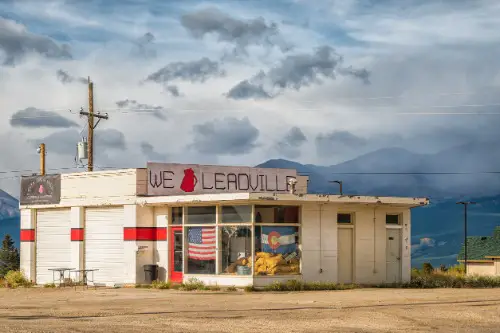
Leadville, Colorado, is a famous example of a mining town that almost disappeared but managed to hold on. Founded in 1877 during a silver rush, Leadville quickly became one of the most important mining towns in the western U.S. At its peak, the town had a population of around 40,000 and was a major supplier of silver. Leadville was home to numerous wealthy mining magnates and played a significant role in shaping Colorado’s economy in the late 19th century. It was also known for its extravagant architecture and lavish homes built by the mining elite.
But by the early 1900s, the silver market began to crash, and the town’s fortunes shifted. The industry collapsed under a combination of falling silver prices, labor disputes, and changing economic circumstances. Leadville went from a bustling boomtown to a nearly abandoned shell of its former self. However, unlike many other towns that suffered the same fate, Leadville didn’t completely disappear. The town clung to life, and today it serves as a historical and tourist destination. Its historic downtown has been beautifully preserved, with Victorian-era buildings and mines scattered around the area. Visitors can explore the remnants of Leadville’s mining past and visit nearby ghost towns like the Matchless Mine.
3. Picher, Oklahoma
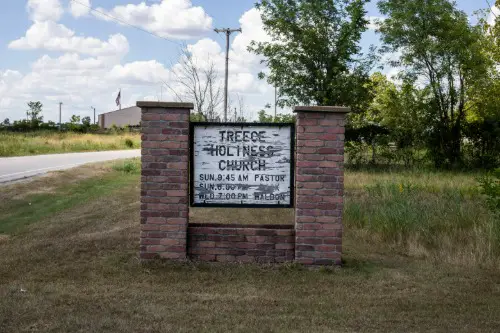
Picher, Oklahoma, is one of the most tragic examples of a town that disappeared due to environmental disasters. Once a prosperous mining town, Picher was famous for its lead and zinc production, which attracted thousands of miners in the early 20th century. At its peak, the town had around 14,000 residents. However, the environmental cost of the mining operations was devastating, as large amounts of toxic heavy metals polluted the air and water. Lead contamination became widespread, and residents began to suffer from various health issues, particularly lead poisoning.
By the 1980s, the Environmental Protection Agency (EPA) began investigating the area and declared Picher a Superfund site due to the extensive environmental damage. As the dangers became clearer, the town was abandoned. The local government urged residents to relocate, and by the early 2000s, Picher was virtually empty. Today, Picher stands as a haunting reminder of the devastating effects of industrial pollution. It is a tragic case where the natural resources that once brought wealth to the area ultimately caused its downfall. Visitors can still find abandoned buildings and crumbling homes, but the toxicity of the land prevents any real redevelopment, making Picher an eerie, cautionary tale of industrial growth gone wrong.
4. Bodie, California
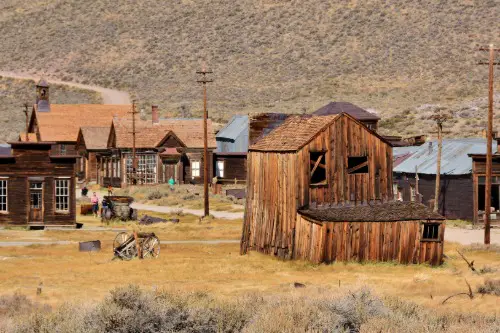
Bodie, California, is a quintessential ghost town that seems to belong to a different era. In the late 1800s, this remote mining town flourished as part of the Gold Rush. At its peak, Bodie was home to over 10,000 people and had a full-fledged town center, complete with saloons, brothels, a schoolhouse, and a church. However, like many boomtowns, Bodie’s fortunes were tied to the gold mines, and once the gold ran dry, so did the town’s prosperity.
Despite the initial promise of riches, Bodie quickly turned into a place of lawlessness, with stories of shootouts and wild behavior filling its history. By the early 1900s, as the gold supply dwindled, businesses began to close, and residents left in droves. In 1912, a major fire swept through Bodie, further accelerating its demise. The town was abandoned, and for decades it lay in ruins, forgotten by the world. What makes Bodie so special today is its state of “arrested decay”—the buildings are carefully preserved in a deteriorated state, as if time has stopped. Visitors today can wander among the derelict homes and businesses, experiencing the atmosphere of a town frozen in time. It’s an eerie yet fascinating place, offering a rare window into the American West during the Gold Rush era.
5. Ashcroft, Colorado
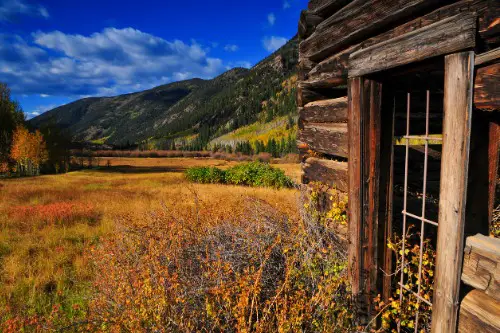
Ashcroft was once a promising silver mining town nestled in the Colorado Rockies. Founded in the 1880s, the town was known for its high-quality silver deposits, which attracted hundreds of miners. At its peak, Ashcroft had around 2,000 residents and boasted the typical amenities of a prosperous mining town, including saloons, stores, and a school. However, the silver veins began to deplete as early as the mid-1890s, and Ashcroft’s population started to dwindle.
The final blow came in the early 1900s when the price of silver dropped drastically, and the town was officially abandoned by the early 20th century. Today, Ashcroft is a well-preserved ghost town, and its buildings, which include a couple of original homes, a hotel, and the remains of old mining equipment, still stand. Located just outside of Aspen, Ashcroft’s picturesque setting against the backdrop of the towering Colorado peaks adds to the eerie atmosphere. The town’s preservation, particularly the remaining homes, allows visitors to take a step back in time and imagine what life might have been like for the hopeful prospectors who once lived there.
6. Cahawba, Alabama
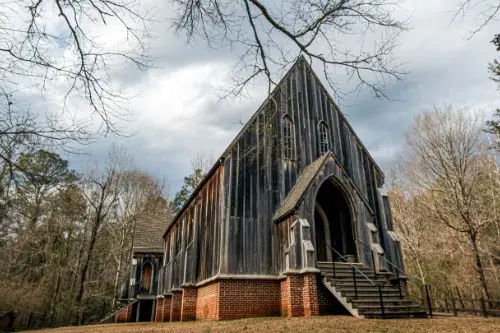
Cahawba was Alabama’s first state capital and holds a unique place in the history of the state. Founded in the early 1800s, it was strategically positioned on the banks of the Alabama River, which made it an ideal location for trade and transportation. For a time, Cahawba was thriving, with brick homes, bustling markets, and a busy political and economic scene. The town was particularly important during the early days of Alabama’s statehood, and it housed the state legislature and even a few prestigious political figures. However, Cahawba’s success was short-lived, as it was quickly undermined by both natural disasters and political turmoil.
In the 1820s and 1830s, Cahawba began to flood regularly, and its geographical location made it difficult to prevent these floods. During the Civil War, the town’s strategic importance diminished, and after the war, its population dwindled further. By the 1870s, Cahawba had virtually disappeared, with its buildings deteriorating into ruin. Today, the site of Cahawba is preserved as a state historic site, where visitors can explore the remnants of the old state capital, including crumbling brick homes, the remains of the old courthouse, and the foundations of long-abandoned structures. It serves as a poignant reminder of how even the most important cities can vanish if they are at the mercy of both natural disasters and shifting political landscapes.
7. Millville, New Jersey

Millville, New Jersey, once known as “The Glass City,” has a rich industrial history. In the late 19th and early 20th centuries, Millville was home to several glass factories that produced high-quality glassware, making it a prominent center for glass manufacturing. The town thrived as a center of production and trade, drawing in thousands of workers and their families. However, like many industrial towns, Millville’s fortune was tied to the success of its factories, and as demand for glass products began to decline and competition increased, the factories started to close.
The onset of the Great Depression further hastened Millville’s economic collapse. Many factories shut their doors, and the town’s once-booming economy went into a sharp decline. By the mid-20th century, most of Millville’s population had moved elsewhere in search of work, and the town gradually faded from the map. Today, remnants of the glassworks remain, and some of the old industrial buildings have been preserved, but the town’s industrial past is largely a memory. Visitors today can still find traces of Millville’s glass-making legacy in museums and historical landmarks that tell the story of a once-thriving community that was swallowed by economic changes.
8. Centralia, Pennsylvania

Centralia is perhaps the most famous ghost town in the United States, and it has a hauntingly unique backstory. The town’s decline began in the 1960s, when a fire broke out in an abandoned coal mine beneath the town. The fire, which likely started as a controlled burn in a landfill, spread into the coal seams underground. What should have been a small, manageable issue quickly escalated into an uncontrollable inferno that has continued to burn ever since, more than 50 years later. The underground fire has caused the ground to sink and emit dangerous levels of carbon monoxide and other toxic gases, making the town uninhabitable.
In the 1980s, after several serious incidents, including a sinkhole that nearly swallowed a car, the government intervened and decided that it was no longer safe for people to live in Centralia. The town’s population dwindled, and by the 2000s, the last few residents were forced to leave. Today, the area is officially abandoned, but it still holds a strange attraction for tourists. The remaining buildings are falling apart, but eerie plumes of smoke still rise from cracks in the ground, creating a surreal atmosphere. Centralia is now one of the most famous examples of an American town that vanished—literally and figuratively—because of a fire that refuses to go out.
9. Rhyolite, Nevada
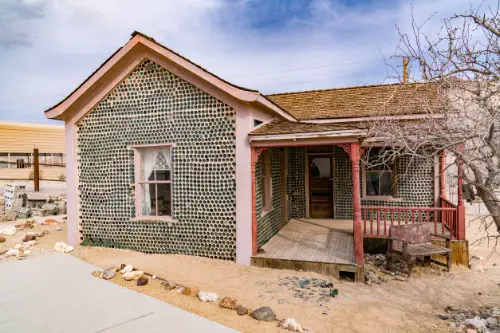
Rhyolite, Nevada, was one of the most spectacular examples of a boomtown that burned bright and then disappeared just as quickly. Located near the eastern edge of Death Valley, Rhyolite was founded in 1905 after gold was discovered nearby. Within a few short years, the town had grown from a small camp to a bustling community with over 5,000 residents. Rhyolite had all the trappings of a prosperous city—hotels, theaters, a school, and even a stock exchange. It seemed like it would last for the long haul.
But like so many other boomtowns, Rhyolite’s prosperity was short-lived. By 1911, the gold veins started to dry up, and the mines became less profitable. As miners moved on to other locations, so did the town’s economy. Within just 15 years, Rhyolite had been abandoned. Today, it stands as one of the most photographed ghost towns in the U.S. The remains of its buildings, including a concrete-block hospital, a former hotel, and a jail, are preserved by the Bureau of Land Management. What makes Rhyolite so interesting is the strange contrast between its ambitious beginnings and its abrupt end. Its picturesque ruins offer a glimpse into a bygone era, surrounded by the harsh beauty of the Nevada desert.
10. Kennecott, Alaska
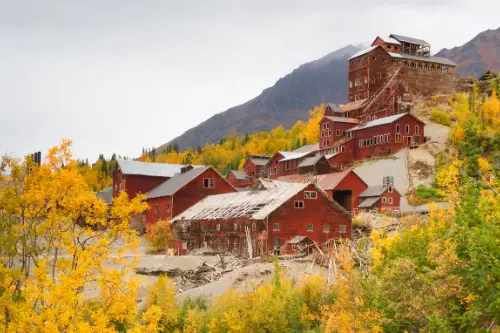
Kennecott, Alaska, was once a bustling copper mining town during the early 1900s. It sprang to life in 1911 when rich veins of copper were discovered in the nearby mountains. The town’s population grew rapidly, peaking at around 300 people, and the Kennecott Copper Corporation built an entire industrial complex to extract and refine the copper. The town boasted all the amenities of a modern mining community—homes, a hospital, schools, and even a post office.
However, like many mining towns, Kennecott’s prosperity was tied to the life of the mine itself. As the copper ore became harder to extract and less profitable, the mining operations began to slow down. By 1938, the mine had closed, and with it, the town. The residents left, and Kennecott was abandoned, leaving behind an eerie collection of decaying buildings and rusted machinery. Today, Kennecott is a ghost town, but it is also a popular tourist destination. The remnants of its industrial buildings, particularly the massive, rusting ore processing plant, have been preserved as a National Historic Landmark. Visitors to Kennecott can explore the haunting remains of the mining operations, which still stand tall against the stark backdrop of the Alaskan wilderness.
11. Bannack, Montana
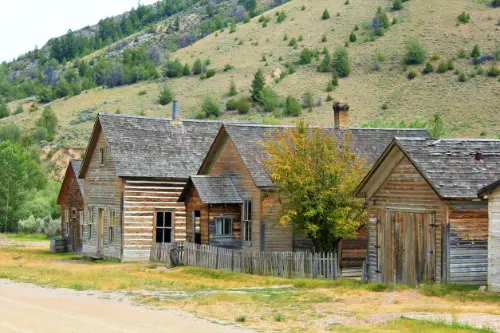
Bannack holds a special place in Montana’s history as the site of the state’s first major gold discovery in 1862. When gold was found in Grasshopper Creek, it sparked a massive gold rush, attracting thousands of miners and settlers to the area. At its height, Bannack was a thriving town of 3,000 people, and its success led to it becoming the first capital of Montana Territory in 1864. The town was home to a mix of miners, shopkeepers, and saloon owners, but it also had a rough side—lawlessness was common, and the town’s early years were marred by violent skirmishes between settlers and Native American tribes.
But by the late 1860s, as the gold reserves began to dwindle, Bannack’s fortunes started to decline. People began moving on to other gold-rich areas, and the population slowly shrank. By the turn of the century, Bannack had faded into obscurity. Today, Bannack is a state park, preserved as a historical site with over 50 standing buildings, including the original courthouse and a large hotel. Unlike many other ghost towns, Bannack hasn’t been completely lost to the elements, and the buildings are well-maintained. The site offers an incredible opportunity to step back in time and imagine what life was like in a Gold Rush-era mining town.
12. River Raisin, Michigan
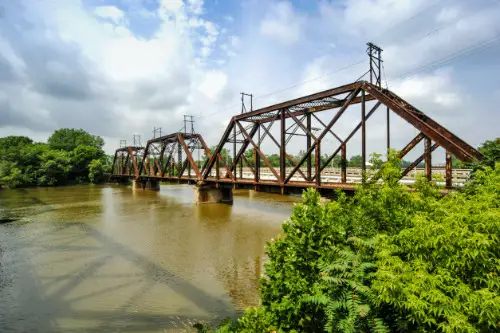
River Raisin, Michigan, was once a bustling trade hub in the early 1800s. Its location along the River Raisin made it a strategic site for settlers looking to establish trade routes and establish military footholds during the War of 1812. The town became an important point for commerce and grew into a prosperous community with farms, shops, and a number of established businesses. However, the town’s fortunes began to unravel after the War of 1812, when it faced severe economic hardships.
In 1837, a catastrophic fire swept through the town, destroying much of its infrastructure and significantly damaging the local economy. Although River Raisin attempted to rebuild after the fire, the town struggled to recover and suffered further economic setbacks. As larger cities in Michigan began to grow, River Raisin lost its relevance, and by the 1850s, most of its residents had relocated. Today, River Raisin is largely forgotten, and the land where it once stood is now primarily agricultural. There are very few remnants of the town left, but the area’s rich history is still remembered in local lore and historical records.


